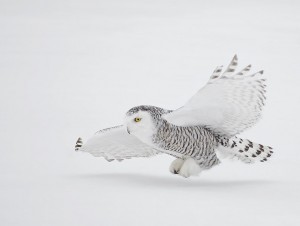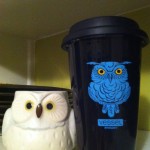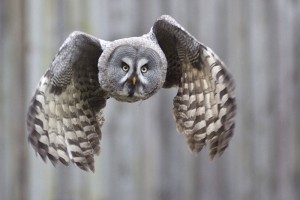
Owls are trending. At least that’s what a grumpy barista told my husband when he tried to get his owl coffee mug filled up. I used to like them before, she sniffed.
We do seem to have accumulated a fair amount of owl paraphernalia in the last few years. Before, our house was an owl-free zone. Now a mobile featuring a parliament of owls swings above my bed. A stuffed owl on the dresser top has glow-in-the-dark eyes. Another plays “Twinkle, Twinkle, Little Star.” And, along with the offending mug, there are other owls in our kitchen cabinets.
Owls also appear in children’s books in much greater frequency than I realized, from Richard Scarry classics to award-winners like The House in the Night. My favorite of all is the great horned owl in Mother Goose in California, a bird that sits in a black oak tree, wearing a UC Berkeley PhD. gown, and a Nobel medal. (One assumes the owl would get an on-campus parking space, if s/he needed it.)
But owls aren’t just trending in my house. Last fall, birders witnessed a snowy owl irruption—a huge movement of these owls from their usual Arctic habitat to points south. While irruptions usually happen every few years, last year was something special, with owls sighted from Boston to Hawaii, and large groups descending on normally owl-light places like Kansas and Missouri.

These owls drew flocks of owl-lovers. “Snowies” are beautiful, with white feathers and yellow eyes, and, unlike most owls, are active during the day. Last year, their massive southbound numbers may have stemmed from a good breeding year, and, possibly, a population crash in lemmings, the owls’ main Arctic food source—but no one knows for sure.
Now is the time the snowy owls will start returning again, although no one’s sure if an irruption is imminent. Denver Holt, founder of the Montana-based Owl Research Institute, was in Manitoba this week and has seen only a few owls so far.
There are only a few Great Gray Owls to see in Yosemite National Park, which harbors a remnant population isolated in the Sierra Nevada during the last ice age. Fewer than 200 of these birds live in the national park, and they’re notoriously shy and sensitive to human disturbance.
Now, researchers in the park are studying these birds with techniques that they hope the birds won’t even notice, including extensive digital recordings of the owls’ calls and sampling DNA from molted feathers.
The Harry Potter series is another set of books that features owls, these ones as charismatic messengers for the wizarding world, slightly slower but much more atmospheric than text messaging. The Muggles, or non-magical people, only start noticing owls when something wonderful or something terrible has come to pass.
The owls we see—or don’t see—may be carrying messages, too. Maybe it’s cheesy to have them decorating our half-caf lattes and diaper bags. But I don’t mind being part of the parliament, as long as we’re listening to these owls’ living counterparts before they bear the tidings of catastrophe.
**
Snowy Owl image: David Hemmings Great Gray Owl image: Arne List
I was just wondering the other day about owls’ migratory habits. I heard one in the night a few days ago here in coastal California. Haven’t heard one before or since.
Thanks for reading, Paul. I think the only time I’ve heard them where I live (also on the coast) is when I’m up in the mountains a bit. I found an interesting compilation of migratory habits of U.S. owl species here: http://bit.ly/PInfvD
Strangely, owl sightings seem to be on the rise in the park where I walk every morning. Last week, I was chatting with two other early morning dog-walkers when one pointed up in the trees. An owl was sitting there unperturbed, just watching us– probably a barred owl, but it was still dark out. Very cool to see it. And a few days earlier another dog-walker told me that an owl had attacked him while he was walking on a park path, swooping down from the trees and striking him on the head. Probably a young owl, who didn’t quite have his hunting chops down.
Am amazed to see the way owls can adapt to city living.
Great horned owls are top of the food chain, so don’t need to worry about making lots of noise. They call all year long, though are noisiest in late winter/early spring when courting. One of their common calls is the one used in movies/tv as the default “owl” call hoo-hoo h’HOO-hoo. Other owl calls are nothing like hoots, so people may hear owls, but have no idea that they have. Barred owls can sound quite a bit screeching monkeys…